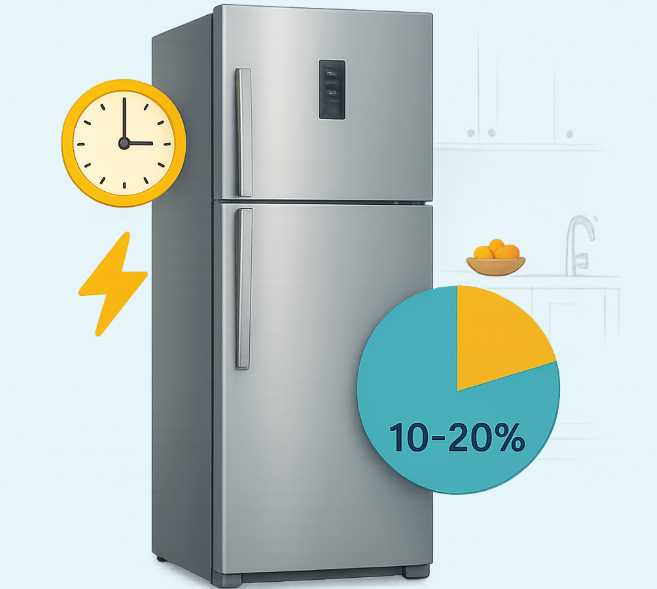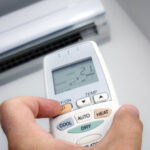Refrigerators run continuously, accounting for 10-20% of total household energy consumption. However, not many people are aware that setting the right temperatures for the fridge and freezer compartments can improve food preservation and significantly reduce monthly electricity bills.

1. Fridge Temperature: The Ideal Range is 3–5°C
The fridge compartment is typically used to store vegetables, fruits, dairy products, beverages, cooked food, etc. Setting the temperature too low (below 2°C) can freeze the food, damaging its structure and wasting energy as the compressor has to work harder. On the other hand, setting it above 7°C can promote bacterial growth and reduce the shelf life of perishables.
According to the US Department of Energy (DOE), the ideal temperature for the fridge compartment is between 3°C and 5°C. This range is optimal for keeping food fresh and safe while conserving energy.
2. Freezer Temperature: -18°C for Optimal Preservation and Energy Efficiency
The freezer compartment is meant to store raw food, frozen food, and ice cubes. Setting the temperature too low (below -20°C) will keep the compressor running continuously, resulting in significant energy consumption.
Experts recommend -18°C as the optimal standard: cold enough to prevent microbial growth while balancing long-term preservation and energy conservation. This temperature is also adopted by many manufacturers and international food safety organizations.
3. Avoid Frequent Temperature Changes
A common mistake many households make is frequently adjusting the fridge and freezer temperatures based on the amount of food. This forces the refrigerator to work harder to regulate the temperature, wasting energy. It is best to maintain stable temperatures and only make changes when necessary, such as during holidays when there is a sudden increase in food storage.
4. Food Arrangement Impacts Cooling Efficiency
Even with proper temperature settings, inefficient food arrangement can lead to higher energy consumption:
Avoid overfilling the refrigerator as it hinders air circulation, causing the appliance to run longer.
Don’t keep the refrigerator too empty, as it works more efficiently with a moderate amount of food to maintain stable temperatures.
Place food items about 2-3 cm away from the walls of the fridge for optimal air circulation.
5. Combine Good Habits with Temperature Settings to Reduce Costs
In addition to setting the right temperatures, some simple habits can help save energy:
Minimize the time the fridge door is open, as the temperature inside can rise by 2-3°C each time.
Allow hot food to cool down before placing it in the fridge.
Regularly check the door gasket to prevent heat loss due to gaps.
Clean the condenser and evaporator coils periodically for more efficient operation.
6. The Energy Savings from Proper Temperature Settings
According to a study by the International Energy Agency (IEA), adjusting refrigerator temperatures from colder settings to the recommended range can reduce energy consumption by 5-10%. For an average household, this can translate to significant savings annually.
Setting the fridge temperature to 3-5°C and the freezer to -18°C is a simple yet effective way to preserve food safely and save on electricity bills. Combined with sensible usage habits, households can substantially reduce their monthly energy costs while prolonging the lifespan of their refrigerator.
The Ultimate Guide to Mastering Your Induction Cooktop: Cook Faster, Safer, and More Efficiently.
The popularity of induction cooktops is soaring due to their speedy cooking, energy efficiency, and enhanced safety compared to gas stoves. To maximize these benefits, users should master the art of choosing the right pots and pans, utilizing appropriate cooking modes, and maintaining their cooktops with proper cleaning techniques.
Does Turning Your Air Conditioner On and Off Immediately Use More Electricity? Debunking a Common Misconception
The use of air conditioners has become a staple in many households, yet not all users are aware of the simple tips and tricks to utilize this appliance efficiently and economically.








































